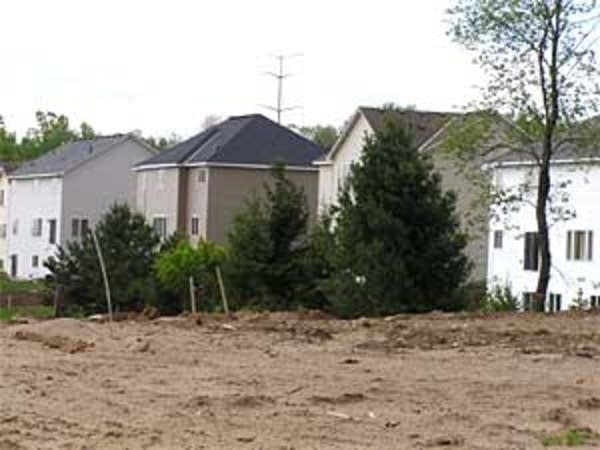Rising gas costs ending sprawl?

University of Minnesota Urban Geography Professor John Adams says the math works out this way.
A dollar more a gallon costs a typical Twin Cities commuter an extra $500 each year. Adams figures that's roughly $2 more a day in fuel costs for a five day work week.
"Is anybody going to change their life for two bucks a day? Well a few people probably will but it's more likely that they'll buy the $2 cup of coffee rather than the $3 cup of coffee," he says.
In other words, according to Adams, $3 a gallon gas alone does not add up to a big enough number in people's budgets to cause them to change where they want to live.
Create a More Connected Minnesota
MPR News is your trusted resource for the news you need. With your support, MPR News brings accessible, courageous journalism and authentic conversation to everyone - free of paywalls and barriers. Your gift makes a difference.

St. Paul commercial and residential real estate developer Steve Wellington says $3 a gallon gas won't end sprawl anytime soon. One reason is it costs more to live near the center of the region than at the fringe for the same amount of land.
"Gas prices certainly push people to consider living closer to the core. But if the costs are so high because developers can't create reasonable housing opportunities it's not going to turn around very soon," he says.
For the most part buyers can get more land and a bigger house for the same amount of money well beyond the Twin Cities beltway in areas that once passed for small town or rural environs.
But sharply higher land costs driven by double digit Twin Cities population growth are starting to change the way sprawl looks.
Rick Packer who works for Arcon, a Twin Cities land development company, agrees rising gas prices won't end sprawl.
Packer says rising land costs are another matter. How dramatic is the increase?
Packer, a former Metropolitan Council member and city planner, recalls five years ago his company raised real estate eyebrows over an acre of land Arcon bought in the northern Twin Cities suburb of Maple Grove.
"We paid an unheard-of price of $67,000 an acre," he says

Two years after that, Packer says, a Maple Grove acre was selling for $120,000.
"Today, land prices in Maple Grove for a good piece of property can be anywhere from $220,000 to $240,000 an acre," he says.
That's a four-fold land price rise in just five years.
So, U of M professor John Adams says, rising land costs, moreso than higher gas costs, are changing the nature of sprawl. There are still mini-mansions, starter castles and ranchettes sprouting on the fringes. But buyers now have more choices.
"Builders who are faced with high land prices are discovering that they put a lot more units on a parcel of land and cut the cost of land per unit by a pretty dramatic degree," he says.
As a result, land developer Rick Packer says, 60 percent of what's being built in the Twin Cities these days is what real estate people call attached housing; townhomes and other connected dwellings on a chunk of land that a few years ago was devoted to a single family home.

Packer holds to his prediction that rising gas prices won't end sprawl. However, the higher fuel costs may change sprawl patterns in another way.
"You may see an increase in transportation options. Transit may begin to take on more importance to people as it becomes a cheaper alternative to driving," he says.
The result could be that more people might choose to live closer to transit routes. Even a modest increase in Twin Cities transit use would be a dramatic development.
Metropolitan Council surveys show more than 90 percent of the daily commuter trips in the region are by personal vehicles and the vast majority are solo drivers.
Gasoline prices, some experts argue, would have to rise to $5 or even $6 a gallon, before the bite in family budgets is deep enough to dramatically alter sprawl.
However, shelling out more for all energy costs, including gasoline, creates subtle ripple effects in society that become visible only with the passage of time.
